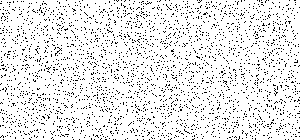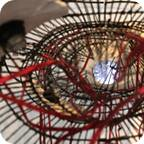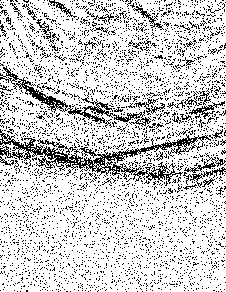Call for Contributions
The ALMAT Symposium calls for artistic research contributions in the following two categories:
1. Contributions exploring the symposium's theme and the questions arising from it. This may include:
- What are the material qualities specific of algorithms and algorithmic practices? How does the algorithmic become malleable as material?
- Are there particular affordances of the algorithmic?
- How does algorithmic agency unfold, how can it be observed, formulated, or communicated? Which alternatives to traditional concepts such as control/controller could be formulated?
- How does the reconfigurative "intrinsic" or "speculative" movement of algorithms extend to or retroact on the artist or recipient, how does it shape their interactions?
- How can artistic experimentation with algorithms be communicated to an audience, how may it help sensitise and empower people to take ownership of the algorithmic?
- Which are the thresholds of heteronomy/autonomy, what makes an algorithmic practice become generative?
- What are philosophical, technological, aesthetic or artistic consequences of acknowledging the agency of algorithms?
2. Contributions that explicitly refer to the research, the experiences and the case studies of the ALMAT research project. Contributions may be commentary, continuation, critique or, more in general, a response to one or more aesthetic and theoretic manifestations and artifacts reflected in the project's documentation. The project's (ongoing) documentation is an online hypertext starting at the Continuous Exposition. In particular, we identified a number of works (see right) that are good candidates for responses, as they will be visible or audible during the symposium.
Contribution Formats
Artistic research aims at expanding the spectrum of what can be "stated" about artistic practices and how, questioning the primacy of a distant-objective written or spoken discourse. We thus welcome proposals that use a variety of formats or hybrid formats, which may include presenting fixed-media, live-performance, the inclusion of video, displaying objects, lecture-performance, etc. Any format suitable to the submitted work is
possible.
Nevertheless, the symposium is principally an exchange among the participants, and not a "concert" or "exhibition" that separates performers and audience. Therefore all contributions should include a more "propositional" aspect that actively triggers and engages in the discussion on the symposium's themes (category 1), or that allows a correspondence with the selected work or artifact (category 2).
Contributions will be allotted 10, 25, or 40 minutes time for presentations during the conference depending on their content and format.
Applications
Applications should include:
- An extended abstract (max. 1000 words). Besides a description of the contribution, the abstract should contain:
- A clear description of how the proposal will contribute to the symposium. For a contribution in category 1, the application should state how the contribution is related to the symposium's questions and themes. In category 2, applications should state to which experiences/works/artefacts the submission responds to.
- An indication as to what length the presentation should be. Three choices are possible: 10, 25 or 40 minutes. We reserve the right to propose a different duration, when we are fitting the various contributions together for the symposium programme.
- An archive (max 20MB upload) containing any additional image, sound or documentation material. This archive might contain:
- If applicable, a detailed technical description in a separate .pdf file. The document should clearly list which equipment needs to be provided by the local organisation and which is brought by the applicant, describe or depict the setup, and state how much space and time is needed for set up.
- Links to additional online resources, if available.
All application should be submitted through the EasyChair portal.
The acceptance of a contribution will not only depend on reviews, but also on their technical requirements and feasibility. Keep in mind that ALMAT has a limited budget and that therefore works that require excessive resources on the organisers' part may not be accepted. It is fundamental that the proponents are ready to bring their own equipment and minimise their reliance on the local organisation. Further, in exceptional cases, the organisers might ask for adaptations of the submitted proposals in order to ensure feasibility and overall balance of the event. When in doubt, you can also get in touch with us in advance to discuss available of equipment through ALMAT. We are also happy to give feedback on preliminary submission ideas, if you communicate them to us ahead of the deadline. We can be reached at <almat@iem.at>.
Körper is the German word for body or bodies (singular/plural). The exposition is interested in the relationship between the algorithmic and corporeality. Artefacts exists in the form of a modular installation / objects—combining sound, video, sensing, physical elements—each of which explores how something obtains an aliveness, a physical presence, an intimacy, a responsiveness to its environment. Some questions that may help approaching the exposition: Do we obtain an algorithmic body when we couple systems and give them a physical embeddedness (do coupling and protocol produce an organism, or what else is needed)? What is behaviour/autonomy? Can there be a body without kinetic movement? How is our own corporeality reflected in the objects we create, or how do those objects relate to the bodies of the visitors?
Contingency and Synchonisation is an installation by Luc Döbereiner and David Pirrò based on a mathematical model that describes synchronisation phenomena. The installation consists of six loudspeaker-mircophone couples that, in their endless process of synchronisation, leave traces of sound forms over time.
Aspects and artefacts of these research iterations will be exhibited alongside the symposium and will also function as sensual material correspondances related to the submitted responses.
The conceptual scope of a response may also extend to any other ALMAT piece, experiment or topic documented in the Research Catalogue. A complete list of all ALMAT activities is available here.
Writing (simultan) is a multiple reconfiguration of an initial formulating of an ongoing automatic writing process, in the abstract or "graphematic" sense. There are two existing instances where artefacts have been produced as a sound installation or "tableau", based on tiny speakers inside petri-dishes, and visual elements. For the symposium we are creating a third installation, again adjusting some perspectives on the machine. Possible questions to approach the exposition: What does a reconfiguration of work entail? What is inside / outside of "an algorithm"? What is relationship between artistic writing / composition, and algorithmic writing? What is the nature of "traces" left behind in any form of writing? What is the proper temporality of an algorithmic process / implementation, what constitutes a "memory"? How can sound similarity used as an interface to exploring algorithmic agency?
Listening to the Air is developed around the first ALMAT residency iteration with Ron Kuivila. Artefacts coming out of this research include a multi-channel sound piece, and a live performance for ultrasound feedback circuits. During the symposium, we plan to show an installation version of the ultrasound work "Listening to the Air". Themes and questions: As a title spanning the project we used plausible / implausible, as this threshold configured much of our discussion around the sociality of algorithms, and way an intervention (in public space or elsewhere) may irritate the attention of an audience. What is this specific tactility of the inaudible ultrasound, the air pressure interrupted by gestures? What happens when something familiar becomes "strange"? What has been excluded from recognisability? (non-conscious cognition)
Through Segments is a sound installation in which four artists collaborate, by following each other in a common movement during the development phase, creating individual layers or segmentations of the common process. The work is site-specific for the stairwell of the Contemporary Arts Museum Graz (Kunsthaus). It is an intersticial embedding into the existing space, responding to the movement of people. Themes and questions: Simultaneity, Segmentarity, Individuation, Foreground/Background, Edges, Multiscale, Bridges. Can we perform "simultaneous arrivals" (S.Ahmed), and what does it mean for the "overall piece"? What is common writing or writing commoning? How can we reflect in the sonic surface the underlying development process?














